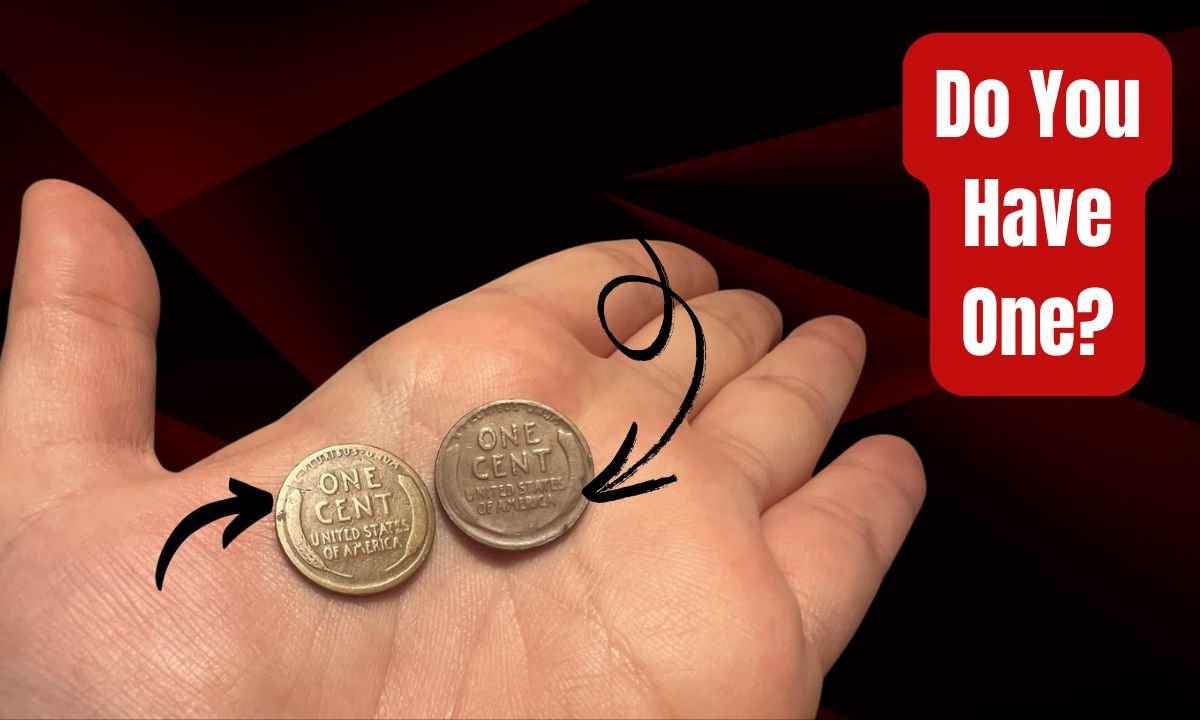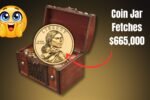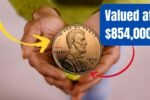A regular home renovation in Ohio turned into something special when a family discovered an old Lincoln penny hidden behind a wall. While updating their house from the 1940s, they found the coin behind a dusty wall clock. What looked like a normal old penny could actually be a rare and valuable piece, exciting collectors across the country.
A Hidden Penny Found During Renovation
The coin was discovered when the family took down an old wall clock. The clock had probably been hanging in the same spot for many years. As they removed it, a penny dropped to the floor. At first, they didn’t think much of it. But after taking a closer look, they noticed the coin had dark color and very sharp details.
Experts think this coin might be a 1909-S VDB Lincoln Wheat Penny. This penny is very rare and valuable. It was made in San Francisco and has the initials “V.D.B.” of the designer. If it’s real, this small penny could be worth tens of thousands of dollars.
Why the 1909-S VDB Penny Is So Important
The 1909-S VDB penny is one of the most famous coins in U.S. history. It was the first year the Lincoln penny was made. The design was created by Victor D. Brenner, and his initials “V.D.B.” were printed on the back of the coin.
But soon, people complained that the initials were too big. So, the U.S. Mint quickly removed them. Because of this, only a small number of these coins were made—less than 500,000. That’s why this penny is so rare. Coin collectors dream of owning one.
Excitement in the Coin Collecting World
After the penny was found, the news spread fast in the coin collecting community. Online forums were filled with people talking about the find. Some collectors and dealers even contacted the family to make offers. But before any sale, the coin needs to be checked and graded by professionals.
The condition of the coin will affect how much it’s worth. Even a rare coin must be in good shape to reach its full value. Experts are now examining the penny to see if it is real and how well it has been preserved.
Here’s a simple table showing the possible value of a 1909-S VDB Lincoln penny based on condition:
| Condition | Estimated Value (USD) |
| Good (G4) | $700 – $900 |
| Fine (F12) | $1,000 – $1,500 |
| Very Fine (VF20) | $2,000 – $3,000 |
| Extremely Fine (EF40) | $3,500 – $4,500 |
| About Uncirculated (AU50) | $5,000 – $7,000 |
| Mint State (MS60+) | $10,000 – $25,000+ |
Everyday Objects Can Be Valuable
This story shows that amazing things can be hiding in plain sight. Old homes, furniture, or even picture frames might hold forgotten treasures. You never know what you might find in your attic or behind a wall.
It’s also a reminder to look carefully at the items we think are worthless. Sometimes, what looks like junk can turn out to be a piece of history. The Ohio family’s simple home project ended up revealing a piece of America’s past.
A Penny’s Journey from Wall to Auction
Now, the penny is being checked to see if it’s real and how much it’s worth. If everything checks out, it may be sold at an auction. The coin’s journey—from a hidden wall spot to a collector’s dream—is already inspiring people.
It reminds us that history can show up when we least expect it. A small object like a penny can tell a big story about the past. For collectors and curious people alike, this tale is a reason to keep exploring and discovering.
FAQs
What is a 1909-S VDB penny?
It’s a rare Lincoln penny made in 1909 with designer initials “V.D.B.”
It’s a rare Lincoln penny made in 1909 with designer initials “V.D.B.”
Why is it rare?
Where was the penny found?
Behind a wall clock in an old Ohio home.
How much is it worth?
It could be worth over $10,000 if in good condition.
Who checks if the coin is real?
Professional grading companies confirm if it’s genuine.



